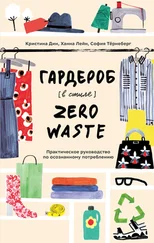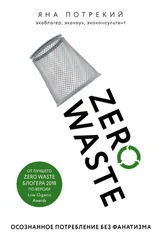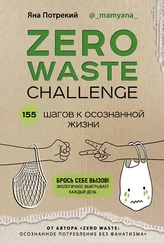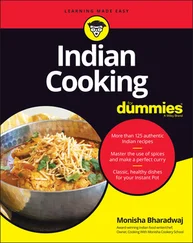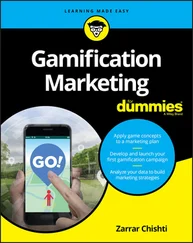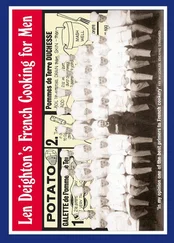9 Appendix: Metric Conversion Guide
10 Index
11 About the Author
12 Supplemental Images
13 Connect with Dummies
14 End User License Agreement
1 Chapter 7TABLE 7-1 Week 1 Meal PlanTABLE 7-2 Week 2 Meal PlanTABLE 7-3 Week 3 Meal PlanTABLE 7-4 Week 4 Meal Plan
1 Chapter 2FIGURE 2-1: Sources of U.S. GHG emissions by economic sector in 2019. FIGURE 2-2: Overview of GHG emissions in 2019. FIGURE 2-3: USDA Organic seal used to certify food produced organically.
2 Chapter 5FIGURE 5-1: Reusable storage options.
3 Chapter 8FIGURE 8-1: How to fold stuffed bread.
4 Chapter 13FIGURE 13-1: Trussing a chicken for roasting. FIGURE 13-2: Carving a whole chicken. FIGURE 13-3: How to fold foil packets. FIGURE 13-4: How to slice flank steak. FIGURE 13-5: Removing seedy pulp from zucchini.
5 Chapter 14FIGURE 14-1: A guide to popular pasta shapes.
1 Cover
2 Title Page
3 Copyright
4 Table of Contents
5 Begin Reading
6 Appendix: Metric Conversion Guide
7 Index
8 About the Author
1 i
2 ii
3 1
4 2
5 3
6 4
7 5
8 7
9 8
10 9
11 10
12 11
13 12
14 13
15 14
16 15
17 16
18 17
19 18
20 19
21 20
22 21
23 22
24 23
25 24
26 25
27 26
28 27
29 28
30 29
31 30
32 31
33 32
34 33
35 34
36 35
37 36
38 37
39 38
40 39
41 40
42 41
43 42
44 43
45 44
46 45
47 46
48 47
49 48
50 49
51 50
52 51
53 52
54 53
55 54
56 55
57 56
58 57
59 58
60 59
61 61
62 62
63 63
64 64
65 65
66 66
67 67
68 68
69 69
70 70
71 71
72 72
73 73
74 74
75 75
76 76
77 77
78 78
79 79
80 80
81 81
82 82
83 83
84 84
85 85
86 86
87 87
88 88
89 89
90 90
91 91
92 92
93 93
94 94
95 95
96 96
97 97
98 98
99 99
100 100
101 101
102 103
103 104
104 105
105 106
106 107
107 108
108 109
109 110
110 111
111 112
112 113
113 114
114 115
115 116
116 117
117 118
118 119
119 120
120 121
121 122
122 123
123 124
124 125
125 126
126 127
127 128
128 129
129 130
130 131
131 132
132 133
133 134
134 135
135 136
136 137
137 138
138 139
139 140
140 141
141 142
142 143
143 144
144 145
145 146
146 147
147 148
148 149
149 150
150 151
151 152
152 153
153 154
154 155
155 156
156 157
157 159
158 160
159 161
160 162
161 163
162 164
163 165
164 166
165 167
166 168
167 169
168 171
169 172
170 173
171 174
172 175
173 176
174 177
175 178
176 179
177 180
178 181
179 182
180 183
181 184
182 185
183 186
184 187
185 188
186 189
187 190
188 191
189 192
190 193
191 194
192 195
193 196
194 197
195 198
196 199
197 200
198 201
199 202
200 203
201 204
202 205
203 206
204 207
205 208
206 209
207 210
208 211
209 212
210 213
211 214
212 215
213 216
214 217
215 218
216 219
217 220
218 221
219 222
220 223
221 224
222 225
223 226
224 227
225 228
226 229
227 230
228 231
229 232
230 233
231 234
232 235
233 236
234 237
235 238
236 239
237 241
238 242
239 243
240 244
241 245
242 246
243 247
244 248
245 249
246 250
247 251
248 252
249 253
250 254
251 255
252 256
253 257
254 258
255 259
256 260
257 261
258 262
259 263
260 264
261 265
262 266
263 267
264 268
265 269
266 270
267 271
268 272
269 273
270 274
271 275
272 276
273 277
274 278
275 279
276 280
277 281
278 282
279 283
280 284
281 285
282 286
283 287
284 288
285 289
286 290
287 291
288 293
289 294
290 295
291 296
292 297
293 298
294 299
295 301
296 302
297 303
298 305
299 306
300 307
301 308
302 309
303 310
304 311
305 312
306 313
307 314
308 315
309 316
310 317
311 318
312 319
313 320
314 321
315 322
316 323
Up to 40 percent of the food produced doesn’t get eaten. This is a waste of not only food but also all the resources it took to produce, process, and deliver that food.
Food and food systems have deep cultural roots, playing a major role in our lifestyles, celebrations, and livelihoods. My experiences interviewing and counseling people about what and how they eat offers me important insights into their “whys,” too. In some cases, food is a comfort, part of an identity, or simply a basic need. In other cases, diet is a form of medical therapy — in that dietary change can improve a medical condition or help manage a disease. In addition, changes in food choices are now made with the environment in mind. But for any of that to work, the individual must accept, and sustain, the change.
My philosophy about food and eating habits is one of reason. For dietary changes to have any impact — whether on your body, your budget, or the environment — those changes must be reasonable and doable. Extreme measures are rarely sustainable. Zero waste cooking can save you money and may even improve your nutrient intake. It also has a positive impact on the environment, reducing the overall methane emissions that result from the food waste that goes from your kitchen to landfills. This book aims to help you reduce your food waste, no matter what you eat.
This book aims to help and encourage you to waste less food.
Many zero waste cooking books adopt the notion that to have a positive impact on the environment, you must focus almost entirely on eating more plants and removing animal products from the diet. This book doesn’t. The notion that everyone can (or wants to) adopt a vegetarian diet is simply unrealistic. Instead, this book encourages you to give more thought to what you eat, and what you throw away, while you begin to adopt a budget-friendly diet that balances your use of a variety of foods with less waste and less harm to the environment.
The goal of this book isn’t to shame you into overhauling your diet, tell you what to eat, or make you feel guilty about your food choices. Rather, my goal in writing this book is to share some facts about how food waste impacts the environment and why reducing food waste is important, help you understand where your food comes from, provide information on food safety and nutrition, and ultimately help you get started with zero waste cooking.
Читать дальше

